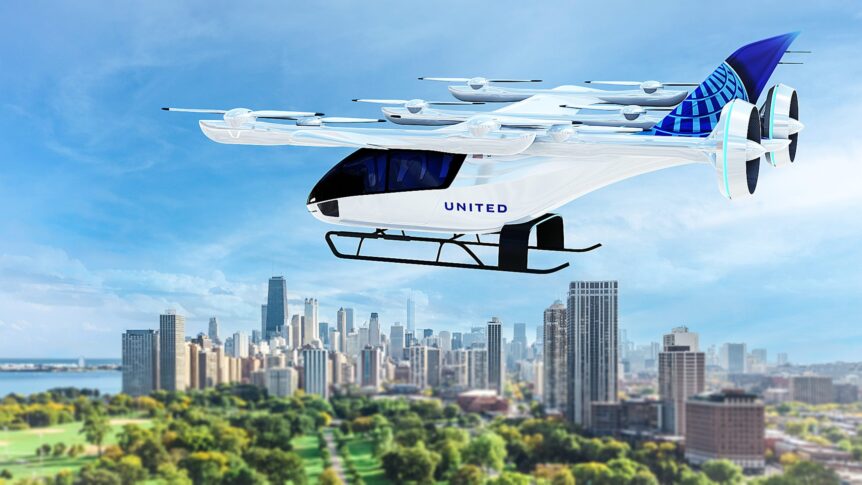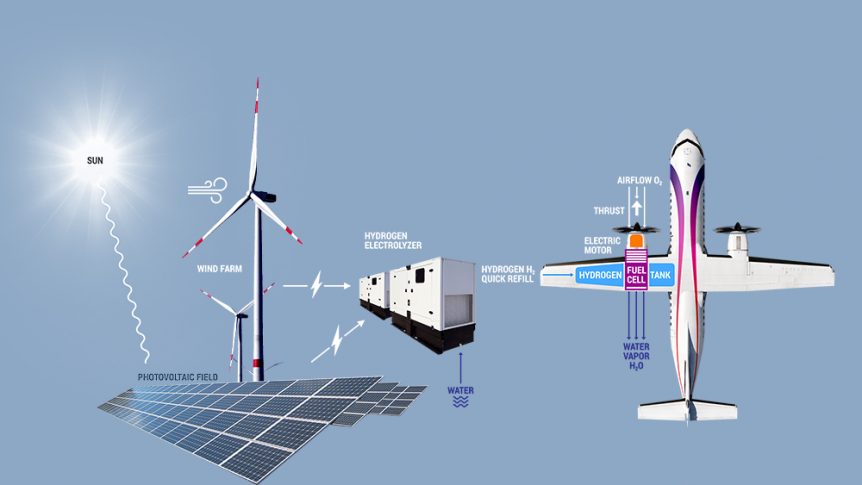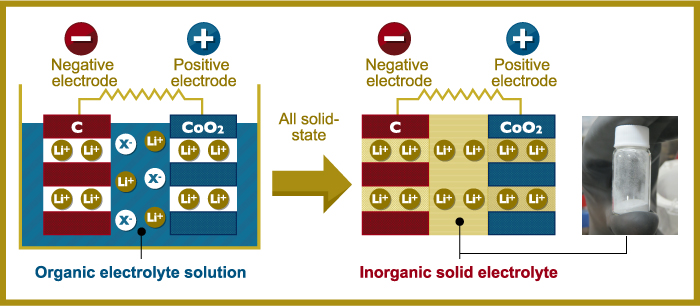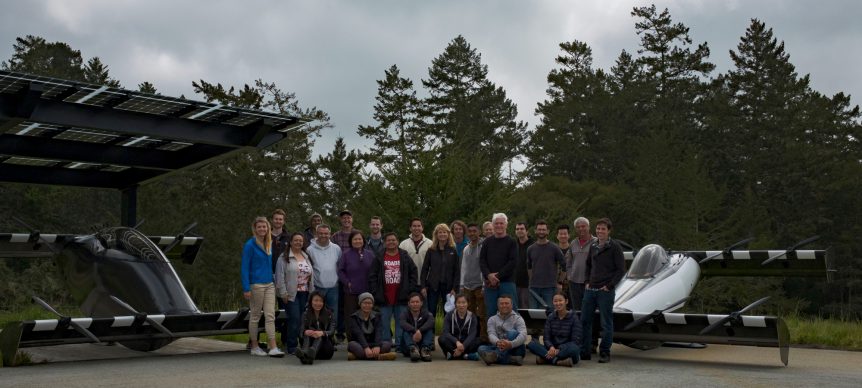Delta and United Airlines are teaming with eVTOL makers Joby, Archer, and Eve – elevating ways to get to and from their airports. The newly-formed alliances will make airline travel a little less tedious and eliminate the often long and sometimes frustrating drives between flights. Delta and Joby Delta Air Lines will invest $60 million in a partnership with Joby Aviation in return for a two-percent stake in Joby and a seat on its board. Joby can receive another $140 million if it meets “certain milestones.” The selling points of convenience and time saving could certainly entice prospective customers. Initially set up as premium services in New York City and Los Angeles, passengers would still rely on automobiles or shuttles to get them from home or office to a heliport (eventually to be a “vertiport”). There, the passenger boards a Joby five-seat tiltrotor aircraft and flies to the airport in around 10 minutes – a huge time saving over ground …
Hydrogen Malibu’s on Two Continents
Tuesday, June 23, ZeroAvia flew a hydrogen-powered Piper Malibu from Cranfield Airport in England., eight time zones from ZeroAvia’s home base in Hollister, California. Flown by Andrew Dixon, that and a subsequent flight gained extra publicity for “a James Bond stunt pilot*” helming the first electric aircraft capable of carrying passengers from a United Kingdom airport. Dixon reported that the battery-powered Piper Malibu needed 10 per cent less distance for take-off and climbed faster than normal. The Airplane Was the Real Star Reflecting the high-flying status of the test pilot, the airplane, part of a government-funded “HyFlyer” project, flew two missions on two days of 15 and 25 minutes each. Its two automotive-based batteries easily carried the six-passenger aircraft on its tours of the Bedfordshire countryside. The second of two Piper Malibus to be converted by ZeroAvia, the craft will be converted to hydrogen power before an October or November “300-mile flight from Orkney to an airport on the Scottish …
BlackBird Air, Bye Aerospace Add to eFlyer Sales
BlackBird Air, Inc., an on-demand flight service operating out of San Carlos, California, has announced it intends to buy 100 eFlyer 4s and 10 eFlyer 2s from Bye Aerospace. These will augment the firm’s existing fleet of Cirrus SR22s and Pilatus PC12s in providing service to its customers. As the San Francisco Chronicle explains, BlackBird has been called “the Uber of air travel,” an app-driven service that enables flights to cities like Burbank, Palm Springs and Las Vegas. Sarah Feldberg, writing for the Chronicle, runs through the niceties of this different plane rental approach. “The interface operates like any trip-booking app until you’ve selected your date and destination. Then, BlackBird prompts you to either join an existing flight or create your own by choosing an aircraft and departure time. For $408, you can fly a three-seater [plus pilot], single-engine Cirrus SR22 from Oakland to Tahoe City on May 24, leaving roughly whenever you’d like and arriving an hour later.” Split …
Lowered Resistance, Greater Spontaneity with Solid-State Batteries
Paradoxically, almost every battery breakthrough seems to have an accompanying problem, and battery developers end up sometimes ditching the positive because of an overriding negative. Solid-state batteries promise some gains without compromise, though. Conventional lithium-ion batteries have possibly reached the limit of their capacity, some scientists fear, and still remain prone to issues like thermal runaway. Developers have looked at solid-state battery designs in which even the electrolyte is solid and not prone to bursting into flame. These batteries promise to have higher energy densities and longer lives, but high resistance at the electrolyte-electrode interface tends to interfere with charging and discharging speeds. Two groups of researchers at the Tokyo Institute of Technology have been taking different approaches to creating a solid-state battery with improved performance and few of the disadvantages of more conventional lithium cells. Stacking Battery Components Scientists from Tokyo Institute of Technology and Tohoku University, led by Professor Taro Hitosugi, “Fabricated all-solid-state batteries with extremely low interface …
Just for Openers – BlackFly
A Seven-Year Stealth Project Opener doesn’t sound like the name of an airplane company, and BlackFly doesn’t sound like a very charming name for an airplane. Maybe that’s how the developers of an eight-motor personal flying machine got away with it for so long. Beth Stanton, who writes wonderful articles about futuristic projects for the Experimental Aircraft Association’s Sport Aviation magazine, alerted your editor about a project that sneaked under the radar for the past seven years. The airplane looks a bit like a single-seat Vahana, Airbus’s two-seat air taxi currently under test in eastern Oregon. Where Vahana is just beginning flight tests, BlackFly has over 12,000 aerial miles carrying a payload in 1,400 flights. BlackFly has gone through 40,000 cycles on its power system, equivalent to 25 circumnavigations of the earth, according to the company. Three fail-safe flight control systems manage redundant motors, elevens, and batteries. Batteries are arranged in a distributed, isolated system. Pilots are constrained and protected from …
From the CRADLE to the Breakthrough Battery
Hyundai, the Korean carmaker turning increasingly to electric vehicles, has teamed with Ionic Materials, a Massachusetts-based battery developer to work on an innovative solid-state battery. Ionic’s solid polymer electrolyte technology promised to improve battery safety and performance. Liquid electrolytes are often blamed for disastrous battery fires, so the search for a solid-state alternative is one way to counter the problem. Hyundai’s CRADLE (Center for Robotic-Augmented Design in Living Experiences), “corporate venturing and open innovation business,” is investing in Ionic to gain access to the company’s technology, which also supports lithium-ion cells with no cobalt in their cathodes. Reducing or eliminating cobalt in their batteries may be a major incentive for Hyundai. Forbes reports, “Carmakers, such as Germany’s BMW, and electronic gadget makers, such as Apple, are scouring the world for supplies of cobalt, a rare metal that has tripled in price over the past year to $80,000 a ton, with 60% of global supply coming from the bloody Democratic Republic of …
Daniel Nocera Returns to the Artificial Leaf
Many scientists are turning to mimicking nature to probe its secrets, but Daniel Nocera, the Patterson Rockwood Professor of Energy at Harvard University, has gone far beyond his natural model. Reported in 2012, Nocera came up with the idea of an “artificial leaf,” a silicon sheet with a layer of cobalt-based catalyst that releases oxygen on one side and a layer a nickel-molybdenum-zinc alloy on the other side that releases hydrogen. Several researchers have followed this initial breakthrough, trying different materials and combinations of ingredients. For a while, it looked as though Nocera turned his attention to battery development, but recent news shows he’s back investigating artificial leaves – with great improvements over his initial efforts – and those of nature, it would seem. His newest approach combines the catalytic energy of the original leaf with a bacterium that makes useful fluids out of the hydrogen generated. It makes the leaf’s output a practical liquid – a fuel. It probably …






